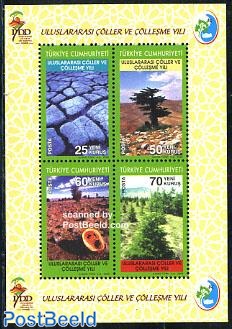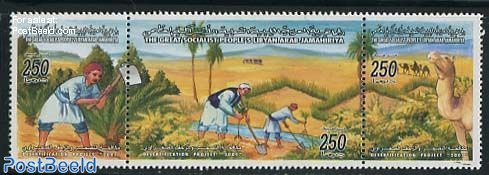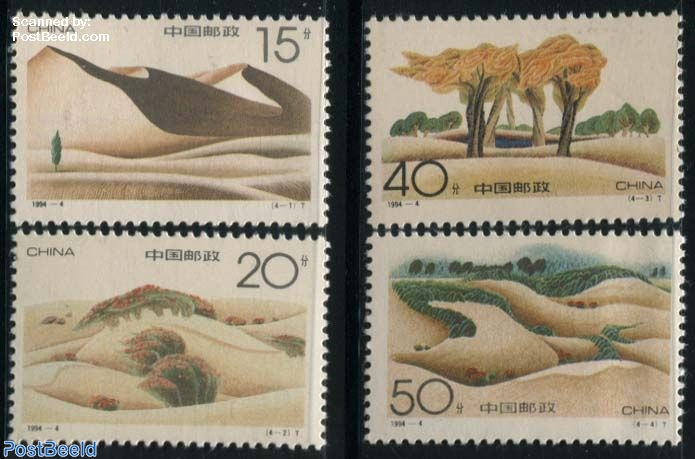
The year 2006 was declared the International Year of Deserts and Desertification by the United Nations General Assembly. Several countries issued stamps that year in an effort to raise awareness of the problem of increased desertification in the world.
| In the words of the then UN Secretary-General Kofi Annan: “Desertification is one of the world’s most alarming processes of environmental degradation. The issue is often obscured, however, by a common misperception – that it’s a natural problem of advancing deserts in faraway developing countries. In fact, Desertification is about land degradation and the loss of the land’s biological productivity, caused by human-induced factors and climate change. It affects one third of the earth’s surface and over a billion people. Moreover, it has potentially devastating consequences in terms of social and economic costs.” |
Examples from Turkey on this stamp sheet, with the International Year of Deserts and Desertification (IYDD) in the left margin.

The two stamps above from Algeria show the Saharan Oases at Benni Abbes and Ain Hammou. Africa is the continent most affected by desertification, and one of the most obvious natural borders on the landmass is the southern edge of the Sahara Desert. The countries that lie on the edge of the Sahara are among the poorest in the world, and they are subject to periodic droughts that devastate their peoples. African drylands (which include the Sahara, the Kalahari Desert and the grasslands of East Africa) make up approximately 65 per cent. of the continent. One-third of Africa’s drylands are largely uninhabited arid deserts, while the remaining two-thirds support two-thirds of the continent’s expanding human population. As Africa’s population increases, the productivity of the land supporting this population declines. Some one-fifth of the irrigated cropland, three-fifths of the rain-fed cropland, and three-quarters of the rangeland have been at least moderately harmed by desertification.
Libya consists mostly of the Sahara Desert with an extremely dry climate not suited to agriculture. Because of low rainfall levels and limited natural resources, fresh water supply in Libya is limited. Water for the agriculture industry has to be sourced from dams and aquifers, but it also has to be shared for domestic use. Only 5 per cent. of the land is farmable and it is easily exhausted, making sustainable agriculture in Libya a challenge. These Libyan stamps from 2001 display the difficulties faced by those wishing to cultivate the land in such a harsh environment.
Above are four stamps from 1993 featuring the Namib Desert, a coastal desert in Namibia, Southern Africa.
Mexico’s 2006 IYDD stamp featured the cactus Echinocactus grusonii, endemic to central Mexico.
Bolivia produced stamps in 2006 showing effects of deforestation and mining leading to desertification.
And then we have two IYDD stamps from Argentina. 75 per cent. of Argentina is composed of arid or semiarid regions.
In 1994 China issued the above stamps, the theme being “Making Deserts Green”.
Finally, the two stamps shown here, produced by the Soviet Union in 1989 as part of a six-stamp set featuring environmental issues, concentrate on an earlier anti-desertification campaign. These two show a scene from the Karakum Desert and a map with areas of desertification shaded on a world map.
![]()









